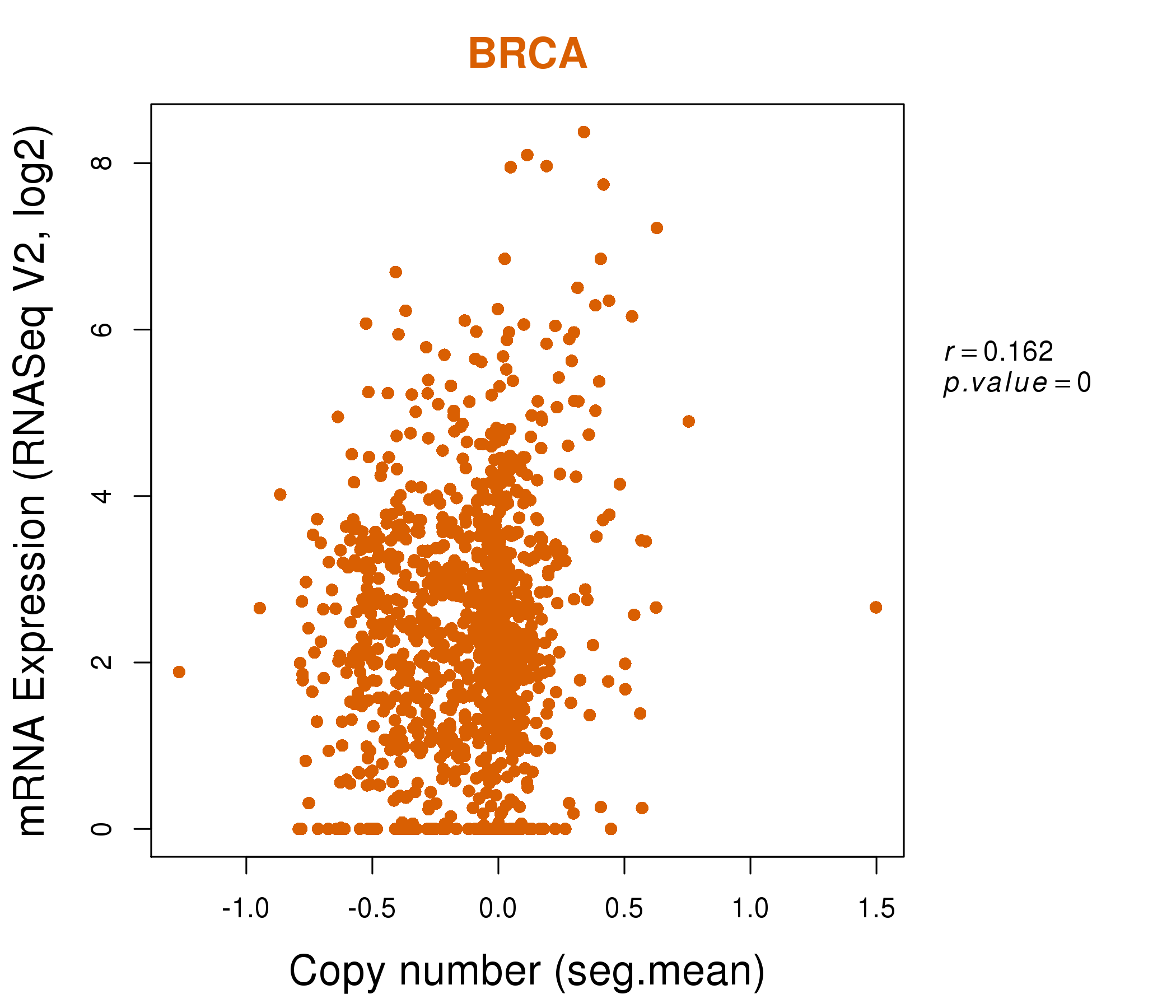|
||||||||||||||||||||
| |
| Phenotypic Information (metabolism pathway, cancer, disease, phenome) |
| |
| |
| Gene-Gene Network Information: Co-Expression Network, Interacting Genes & KEGG |
| |
|
| Gene Summary for SLC16A8 |
| Basic gene info. | Gene symbol | SLC16A8 |
| Gene name | solute carrier family 16 (monocarboxylate transporter), member 8 | |
| Synonyms | MCT3|REMP | |
| Cytomap | UCSC genome browser: 22q12.3-q13.2 | |
| Genomic location | chr22 :38474143-38479170 | |
| Type of gene | protein-coding | |
| RefGenes | NM_013356.2, | |
| Ensembl id | ENSG00000100156 | |
| Description | MCT 3monocarboxylate transporter 3solute carrier 16 (monocarboxylic acid transporters), member 8solute carrier family 16 member 8solute carrier family 16, member 8 (monocarboxylic acid transporter 3) | |
| Modification date | 20141207 | |
| dbXrefs | MIM : 610409 | |
| HGNC : HGNC | ||
| Ensembl : ENSG00000100156 | ||
| HPRD : 11568 | ||
| Vega : OTTHUMG00000151196 | ||
| Protein | UniProt: go to UniProt's Cross Reference DB Table | |
| Expression | CleanEX: HS_SLC16A8 | |
| BioGPS: 23539 | ||
| Gene Expression Atlas: ENSG00000100156 | ||
| The Human Protein Atlas: ENSG00000100156 | ||
| Pathway | NCI Pathway Interaction Database: SLC16A8 | |
| KEGG: SLC16A8 | ||
| REACTOME: SLC16A8 | ||
| ConsensusPathDB | ||
| Pathway Commons: SLC16A8 | ||
| Metabolism | MetaCyc: SLC16A8 | |
| HUMANCyc: SLC16A8 | ||
| Regulation | Ensembl's Regulation: ENSG00000100156 | |
| miRBase: chr22 :38,474,143-38,479,170 | ||
| TargetScan: NM_013356 | ||
| cisRED: ENSG00000100156 | ||
| Context | iHOP: SLC16A8 | |
| cancer metabolism search in PubMed: SLC16A8 | ||
| UCL Cancer Institute: SLC16A8 | ||
| Assigned class in ccmGDB | C | |
| Top |
| Phenotypic Information for SLC16A8(metabolism pathway, cancer, disease, phenome) |
| Cancer | CGAP: SLC16A8 |
| Familial Cancer Database: SLC16A8 | |
| * This gene is included in those cancer gene databases. |
|
|
|
|
|
|
| ||||||||||||||
Oncogene 1 | Significant driver gene in | |||||||||||||||||||
| cf) number; DB name 1 Oncogene; http://nar.oxfordjournals.org/content/35/suppl_1/D721.long, 2 Tumor Suppressor gene; https://bioinfo.uth.edu/TSGene/, 3 Cancer Gene Census; http://www.nature.com/nrc/journal/v4/n3/abs/nrc1299.html, 4 CancerGenes; http://nar.oxfordjournals.org/content/35/suppl_1/D721.long, 5 Network of Cancer Gene; http://ncg.kcl.ac.uk/index.php, 1Therapeutic Vulnerabilities in Cancer; http://cbio.mskcc.org/cancergenomics/statius/ |
| REACTOME_PYRUVATE_METABOLISM_AND_CITRIC_ACID_TCA_CYCLE REACTOME_PYRUVATE_METABOLISM | |
| Mutations for SLC16A8 |
| * Under tables are showing count per each tissue to give us broad intuition about tissue specific mutation patterns.You can go to the detailed page for each mutation database's web site. |
| - Statistics for Tissue and Mutation type | Top |
 |
| - For Inter-chromosomal Variations |
| There's no inter-chromosomal structural variation. |
| - For Intra-chromosomal Variations |
| * Intra-chromosomal variantions includes 'intrachromosomal amplicon to amplicon', 'intrachromosomal amplicon to non-amplified dna', 'intrachromosomal deletion', 'intrachromosomal fold-back inversion', 'intrachromosomal inversion', 'intrachromosomal tandem duplication', 'Intrachromosomal unknown type', 'intrachromosomal with inverted orientation', 'intrachromosomal with non-inverted orientation'. |
 |
| Sample | Symbol_a | Chr_a | Start_a | End_a | Symbol_b | Chr_b | Start_b | End_b |
| pancreas | SLC16A8 | chr22 | 38478100 | 38478120 | SLC16A8 | chr22 | 38478176 | 38478196 |
| cf) Tissue number; Tissue name (1;Breast, 2;Central_nervous_system, 3;Haematopoietic_and_lymphoid_tissue, 4;Large_intestine, 5;Liver, 6;Lung, 7;Ovary, 8;Pancreas, 9;Prostate, 10;Skin, 11;Soft_tissue, 12;Upper_aerodigestive_tract) |
| * From mRNA Sanger sequences, Chitars2.0 arranged chimeric transcripts. This table shows SLC16A8 related fusion information. |
| ID | Head Gene | Tail Gene | Accession | Gene_a | qStart_a | qEnd_a | Chromosome_a | tStart_a | tEnd_a | Gene_a | qStart_a | qEnd_a | Chromosome_a | tStart_a | tEnd_a |
| Top |
| There's no copy number variation information in COSMIC data for this gene. |
| Top |
|
 |
| Top |
| Stat. for Non-Synonymous SNVs (# total SNVs=18) | (# total SNVs=10) |
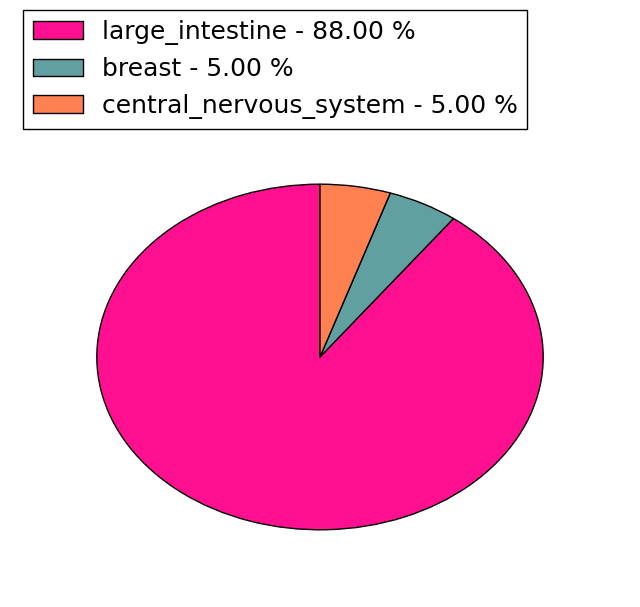 |  |
(# total SNVs=0) | (# total SNVs=0) |
| Top |
| * When you move the cursor on each content, you can see more deailed mutation information on the Tooltip. Those are primary_site,primary_histology,mutation(aa),pubmedID. |
| GRCh37 position | Mutation(aa) | Unique sampleID count |
| chr22:38477342-38477342 | p.R235W | 11 |
| chr22:38477930-38477930 | p.L108L | 2 |
| chr22:38474460-38474460 | p.A484T | 2 |
| chr22:38474554-38474554 | p.S452S | 2 |
| chr22:38474563-38474563 | p.G449G | 1 |
| chr22:38477098-38477098 | p.R316L | 1 |
| chr22:38478875-38478875 | p.G2G | 1 |
| chr22:38474623-38474623 | p.V429V | 1 |
| chr22:38477275-38477275 | p.A257V | 1 |
| chr22:38474640-38474640 | p.G424R | 1 |
| Top |
|
 |
| Point Mutation/ Tissue ID | 1 | 2 | 3 | 4 | 5 | 6 | 7 | 8 | 9 | 10 | 11 | 12 | 13 | 14 | 15 | 16 | 17 | 18 | 19 | 20 |
| # sample | 1 | 5 | 1 | 1 | 3 | 3 | ||||||||||||||
| # mutation | 1 | 6 | 1 | 1 | 3 | 3 | ||||||||||||||
| nonsynonymous SNV | 4 | 1 | 2 | 1 | ||||||||||||||||
| synonymous SNV | 1 | 2 | 1 | 1 | 2 |
| cf) Tissue ID; Tissue type (1; BLCA[Bladder Urothelial Carcinoma], 2; BRCA[Breast invasive carcinoma], 3; CESC[Cervical squamous cell carcinoma and endocervical adenocarcinoma], 4; COAD[Colon adenocarcinoma], 5; GBM[Glioblastoma multiforme], 6; Glioma Low Grade, 7; HNSC[Head and Neck squamous cell carcinoma], 8; KICH[Kidney Chromophobe], 9; KIRC[Kidney renal clear cell carcinoma], 10; KIRP[Kidney renal papillary cell carcinoma], 11; LAML[Acute Myeloid Leukemia], 12; LUAD[Lung adenocarcinoma], 13; LUSC[Lung squamous cell carcinoma], 14; OV[Ovarian serous cystadenocarcinoma ], 15; PAAD[Pancreatic adenocarcinoma], 16; PRAD[Prostate adenocarcinoma], 17; SKCM[Skin Cutaneous Melanoma], 18:STAD[Stomach adenocarcinoma], 19:THCA[Thyroid carcinoma], 20:UCEC[Uterine Corpus Endometrial Carcinoma]) |
| Top |
| * We represented just top 10 SNVs. When you move the cursor on each content, you can see more deailed mutation information on the Tooltip. Those are primary_site, primary_histology, mutation(aa), pubmedID. |
| Genomic Position | Mutation(aa) | Unique sampleID count |
| chr22:38474460 | p.A484T | 2 |
| chr22:38474623 | p.P396P | 1 |
| chr22:38474640 | p.A374V | 1 |
| chr22:38476857 | p.A362A | 1 |
| chr22:38476924 | p.G354G | 1 |
| chr22:38476959 | p.R341C | 1 |
| chr22:38476983 | p.A313E | 1 |
| chr22:38477024 | p.T57T | 1 |
| chr22:38474436 | p.V21V | 1 |
| chr22:38477107 | p.E492K | 1 |
| * Copy number data were extracted from TCGA using R package TCGA-Assembler. The URLs of all public data files on TCGA DCC data server were gathered on Jan-05-2015. Function ProcessCNAData in TCGA-Assembler package was used to obtain gene-level copy number value which is calculated as the average copy number of the genomic region of a gene. |
 |
| cf) Tissue ID[Tissue type]: BLCA[Bladder Urothelial Carcinoma], BRCA[Breast invasive carcinoma], CESC[Cervical squamous cell carcinoma and endocervical adenocarcinoma], COAD[Colon adenocarcinoma], GBM[Glioblastoma multiforme], Glioma Low Grade, HNSC[Head and Neck squamous cell carcinoma], KICH[Kidney Chromophobe], KIRC[Kidney renal clear cell carcinoma], KIRP[Kidney renal papillary cell carcinoma], LAML[Acute Myeloid Leukemia], LUAD[Lung adenocarcinoma], LUSC[Lung squamous cell carcinoma], OV[Ovarian serous cystadenocarcinoma ], PAAD[Pancreatic adenocarcinoma], PRAD[Prostate adenocarcinoma], SKCM[Skin Cutaneous Melanoma], STAD[Stomach adenocarcinoma], THCA[Thyroid carcinoma], UCEC[Uterine Corpus Endometrial Carcinoma] |
| Top |
| Gene Expression for SLC16A8 |
| * CCLE gene expression data were extracted from CCLE_Expression_Entrez_2012-10-18.res: Gene-centric RMA-normalized mRNA expression data. |
 |
| * Normalized gene expression data of RNASeqV2 was extracted from TCGA using R package TCGA-Assembler. The URLs of all public data files on TCGA DCC data server were gathered at Jan-05-2015. Only eight cancer types have enough normal control samples for differential expression analysis. (t test, adjusted p<0.05 (using Benjamini-Hochberg FDR)) |
 |
| Top |
| * This plots show the correlation between CNV and gene expression. |
: Open all plots for all cancer types
 |
|
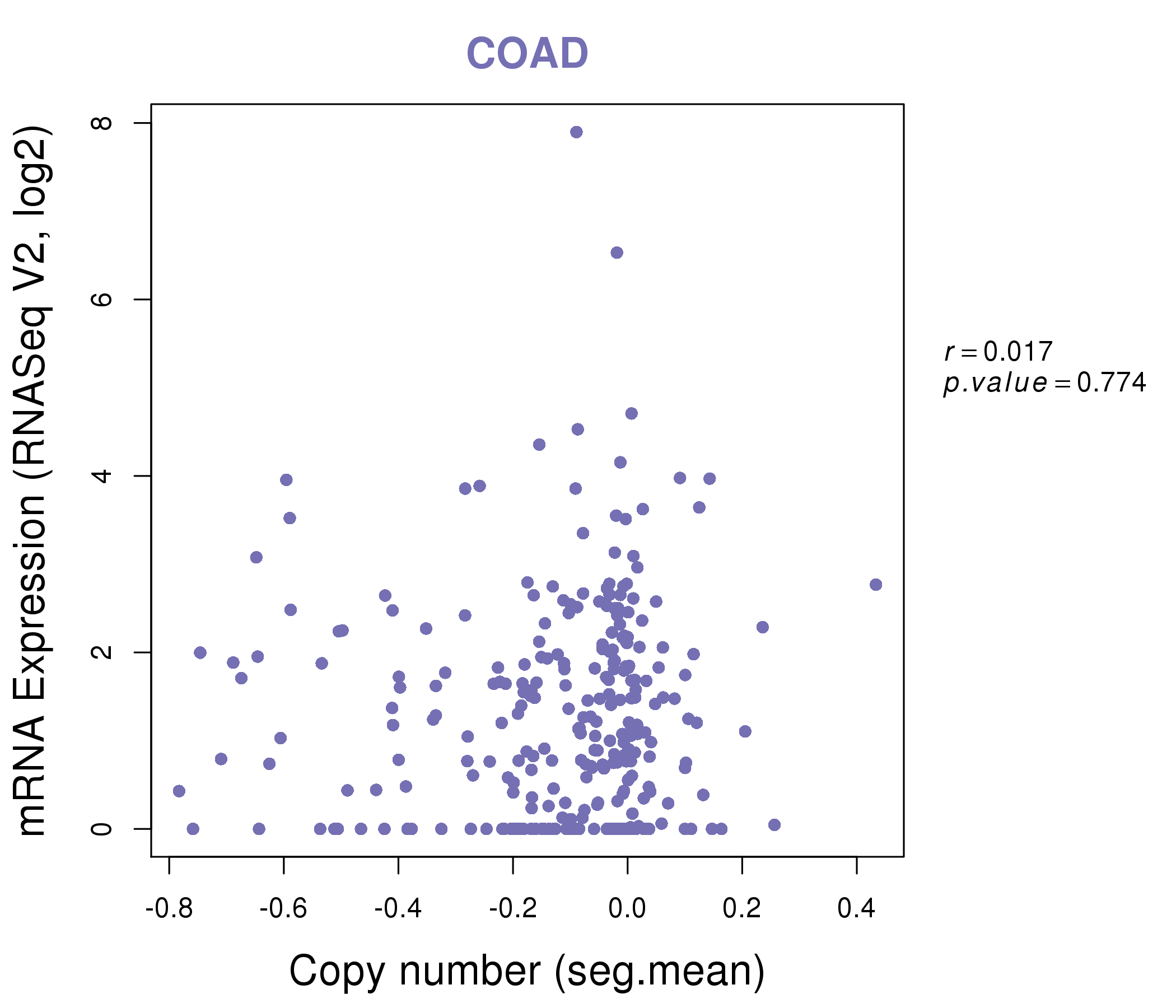 |
|
| Top |
| Gene-Gene Network Information |
| * Co-Expression network figures were drawn using R package igraph. Only the top 20 genes with the highest correlations were shown. Red circle: input gene, orange circle: cell metabolism gene, sky circle: other gene |
: Open all plots for all cancer types
 |
| ||||
| ASB18,ATP4A,CTPS1,EXO5,FAM27L,NXPE2,FKBP9P1, GAB4,GCK,GPRC6A,KLK5,LOC100130557,MTHFD1L,PNLDC1, RNASE2,RPL18A,SCMH1,SLC16A8,SLFNL1,ZNF362,ZFP69B | AGAP3,ANAPC2,ANKS3,BANP,CDK10,CXXC1,EHMT2, GGA1,MTA1,OGFOD2,RECQL5,SEPT5,SH2B1,SLC16A8, SNRNP70,SPPL2B,SPRN,SYMPK,USP20,XAB2,ZNF282 | ||||
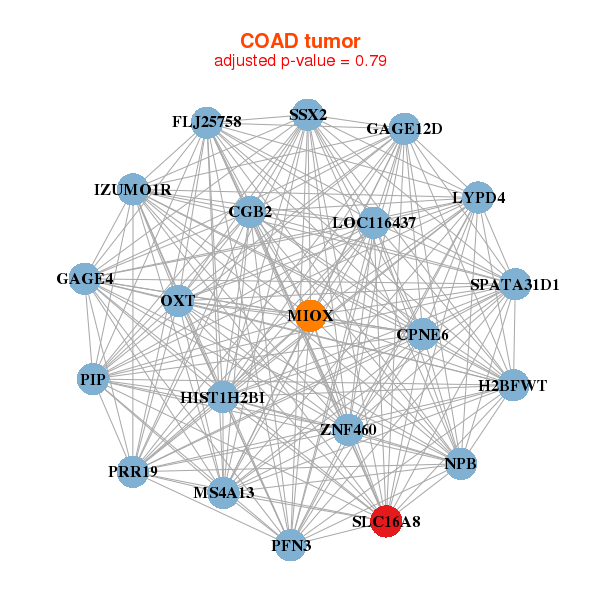 |
| ||||
| CGB2,CPNE6,FLJ25758,SPATA31D1,IZUMO1R,GAGE12D,GAGE4, H2BFWT,HIST1H2BI,LOC116437,LYPD4,MIOX,MS4A13,NPB, OXT,PFN3,PIP,PRR19,SLC16A8,SSX2,ZNF460 | ATOH8,BCAM,EFHD1,TMEM255A,GRIP2,HRC,HTR1F, MUSTN1,MYOZ1,NOL3,NRIP2,PEAR1,POLL,RCAN2, RERGL,SLC16A8,SLC6A1,SLC7A2,SRL,ZNF202,ZNF496 |
| * Co-Expression network figures were drawn using R package igraph. Only the top 20 genes with the highest correlations were shown. Red circle: input gene, orange circle: cell metabolism gene, sky circle: other gene |
: Open all plots for all cancer types
| Top |
: Open all interacting genes' information including KEGG pathway for all interacting genes from DAVID
| Top |
| Pharmacological Information for SLC16A8 |
| DB Category | DB Name | DB's ID and Url link |
| * Gene Centered Interaction Network. |
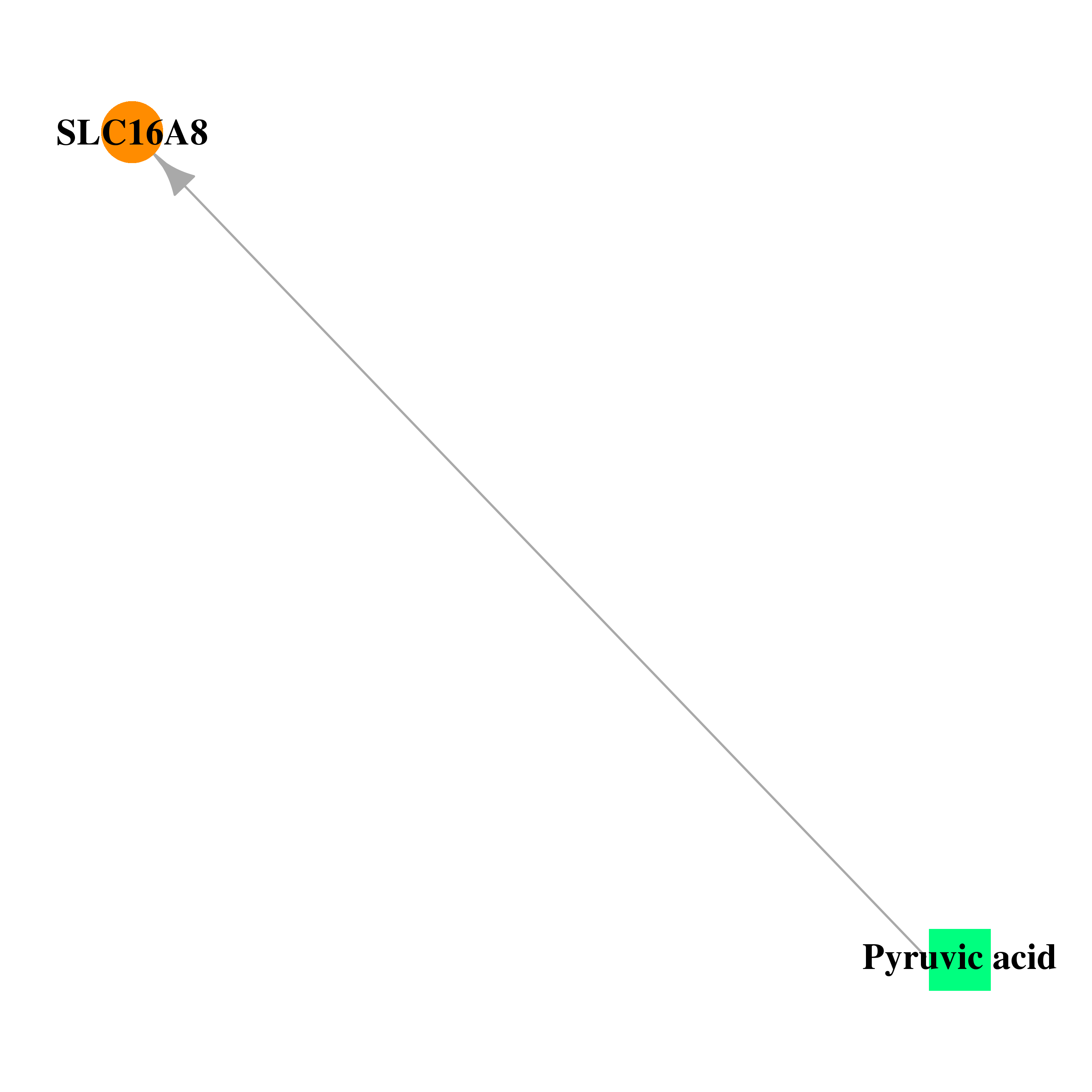 |
| * Drug Centered Interaction Network. |
| DrugBank ID | Target Name | Drug Groups | Generic Name | Drug Centered Network | Drug Structure |
| DB00119 | solute carrier family 16, member 8 (monocarboxylic acid transporter 3) | approved; nutraceutical | Pyruvic acid | 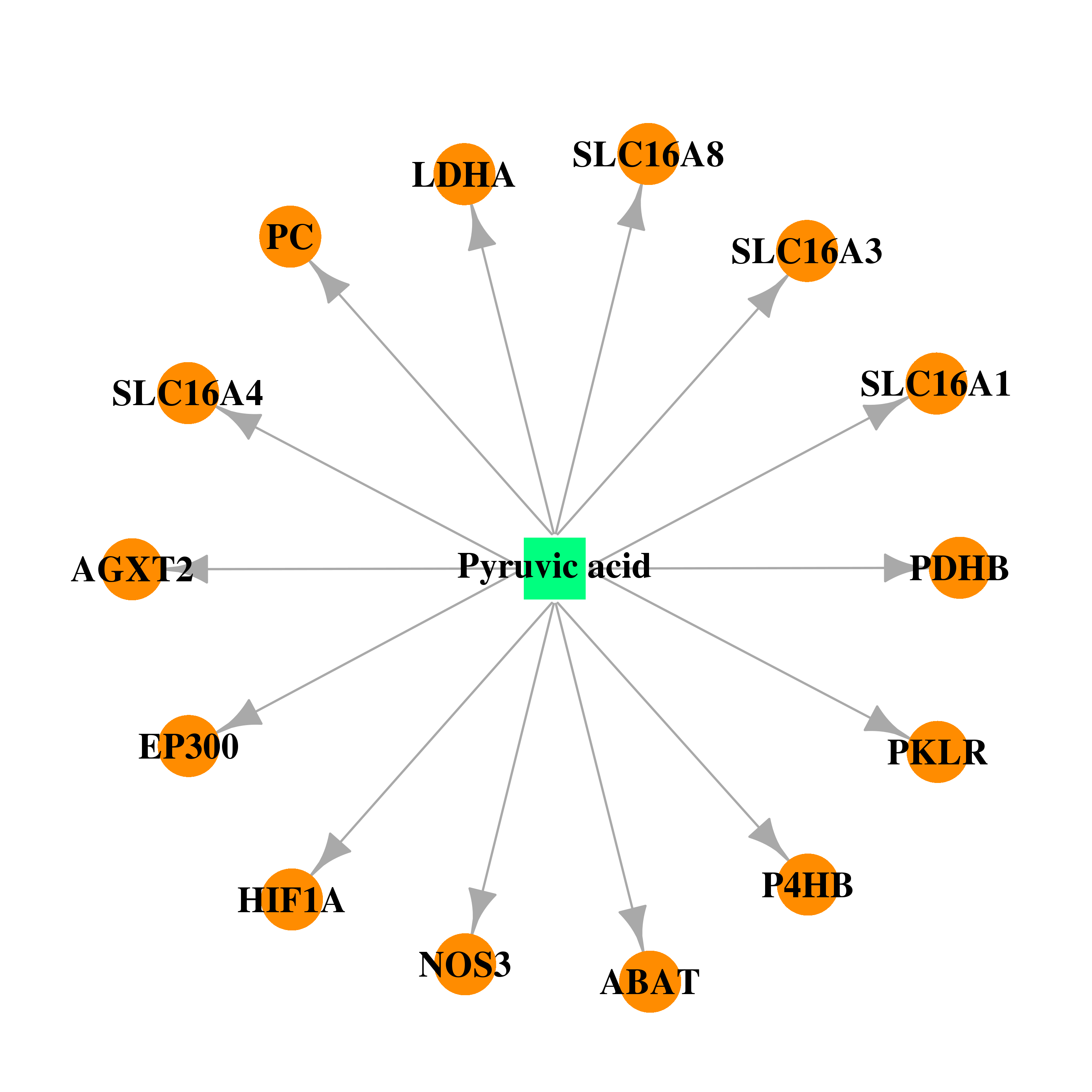 | 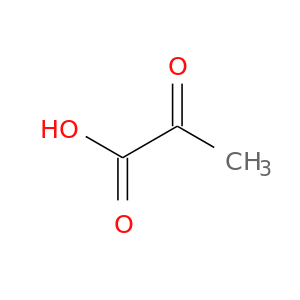 |
| Top |
| Cross referenced IDs for SLC16A8 |
| * We obtained these cross-references from Uniprot database. It covers 150 different DBs, 18 categories. http://www.uniprot.org/help/cross_references_section |
: Open all cross reference information
|
Copyright © 2016-Present - The Univsersity of Texas Health Science Center at Houston @ |






